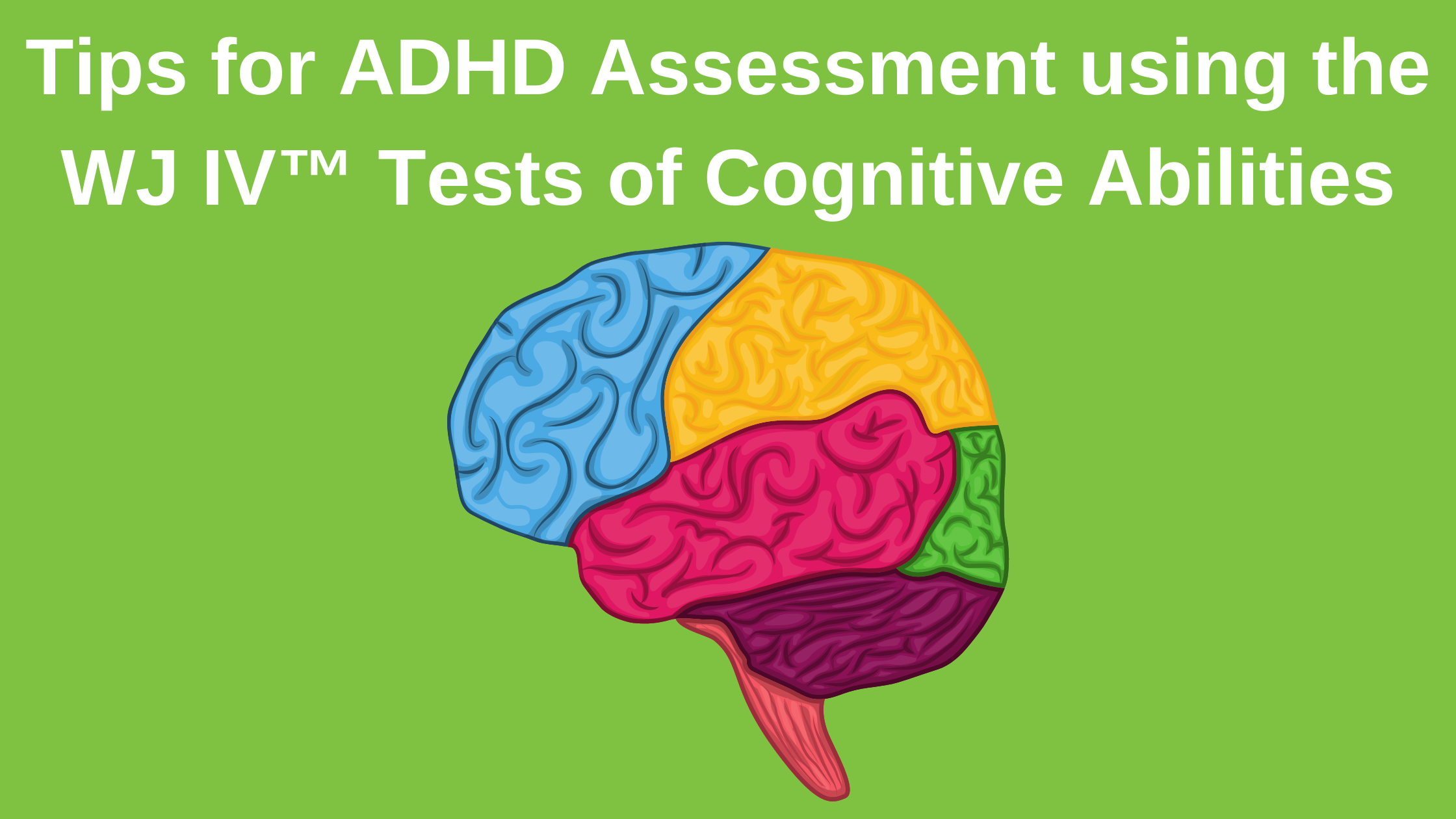
Attention Deficit/Hyperactivity Disorder (ADHD) is a commonly diagnosed neurodevelopmental disorder. According to the National Survey of Children’s Health (2019), approximately 8.6% of children were reported as having ADHD. Furthermore, approximately 5% of families reported having a child with “moderate or severe,” ADHD. In the classroom, ADHD is sometimes thought of as the student who has trouble sitting still, is overly talkative, and loses focus easily. However, ADHD is much more complex than this. It is important to consider executive functioning when evaluating a student referred due to ADHD concerns. Executive functioning is an umbrella term encompassing multiple skills necessary to meet task demands (e.g., planning, organization, flexible thinking, self-control, short-term working memory).
Examiners can use the WJ IV COG to better understand a student’s profile in relation to ADHD.
Before the Evaluation:
-
-
- Observe the student in the classroom: It is recommended that the examiner observe the student to gain a better understanding of their behavior. It is possible for some behaviors to present with lesser severity during testing due to the highly structured and one-to-one format of administering the WJ IV COG. The WJ IV Interpretation and Instructional Interventions Program (WIIIP) offers various checklists, including a Classroom Behavior Observation Form, allowing for a thorough review of problem behaviors of interest for ADHD.
- Scheduling: It is important to consider when a student would be most likely to perform at their best (e.g., in the morning versus at the end of a long school day). Teacher and parent reports, and observations, can help determine when it may be best to evaluate. Scheduling shorter test sessions, and offering short, structured breaks can also be beneficial.
- Behavioral Management: It is recommended that expectations be set with students at the start of the evaluation as to orient the student to testing. It is suggested that the examiner ignore and redirect to the task-at-hand when faced with unwanted behaviors, while also positively reinforcing desired behaviors and efforts.
-
During the Evaluation:
-
-
- Take note of behavioral patterns: A student’s behaviors during testing often provide valuable qualitative data related to attentional or behavioral concerns. For example, did the student miss simpler items despite answering challenging ones correctly? Did they answer questions quickly and then self-correct? Did they engage in tangential conversation? Did they interrupt the examiner during the provision of instructions?
- Ask the student for feedback: If a student is suspected of having difficulties with ADHD, their ability to self-monitor may be a concern. Asking a student about their thoughts related to a task can help the examiner better understand how the student perceives their skills/performance. It also allows the examiner to see if the student can accurately appraise their own performance. Simply asking, “How was that for you?” or “What did you think of that task?” can set the stage for deeper conversation.
-
Things to consider after testing: You can derive several scores and ability areas after administering the WJ-IV COG. Those of interest in ADHD assessment are highlighted below.
1. Cognitive Composites: These include the Brief Intellectual Ability (BIA), General Intellectual Ability (GIA), and Gf-Gc Composite.-
-
-
- Comparing the GIA and the Gf-Gc Composite: The GIA includes (but is not limited to) tasks of long-term memory and retrieval, short-term working memory and cognitive processing speed. These functions may be limited in students with ADHD. If significant limitations are found, use of the Gf-Gc is recommended as a more accurate representation of overall cognitive performance. Unlike the GIA, the Gf-Gc composite provides an isolated account of a student’s verbal and nonverbal reasoning skills. As such, the derived Gf-Gc score does not include performance limitations in other domains.
-
2. CHC Factors: -
-
-
-
- Long-Term Memory and Retrieval: Students with ADHD may find it challenging to hone their attention, which is necessary to encode and store new information. Story Recall assesses meaningful memory using only verbal prompts. In the classroom, this task may look like a student’s ability to retain meaning from a classroom discussion or lecture. In comparison, Visual-Auditory Learning tests associative memory via the learning and recalling of visual symbols paired with verbal information. Performance during this task may support the use of visual aids in the classroom in the service of a student’s memory.
- Short-Term Working Memory: Students with ADHD may have difficulty with short-term working memory. In the classroom, this may present as a student who struggles to manage multi-step directions. On the WJ IV COG, this cluster includes: Verbal Attention (measures attentional control), Numbers Reversed (assesses attentional capacity), and Object-Number Sequencing (tests working memory capacity). Strategies (e.g., rehearsal, restating the question or target information, etc.) can be used to support a student’s working memory within the classroom.
- Cognitive Processing Speed: Assesses the speed at which a person understands and reacts appropriately to information/input. Letter-Pattern Matching (a measure of perceptual speed) and Pair Cancellation (measures sustained attention, inhibition, and vigilance) fall within this domain. Processing speed tasks map on to fluency tasks that students may be given in the classroom. It is important to be mindful of behavioral patterns during these tasks (e.g., the student worked slowly but accurately, they worked very quickly and inaccurately, etc.).
-
-
3. Clinical Clusters:
-
-
-
- Cognitive Efficiency: This cluster is comprised of short-term working memory and processing speed tasks. Conducting an ability comparison using Riverside Score can allow examiners to compare a student’s cognitive efficiency to other areas of functioning. Impaired cognitive efficiency can hinder a student’s ability to engage in more sophisticated tasks.
-
-
The WJ IV COG allows for an in-depth review of a student’s cognitive functioning and can play a vital role in ADHD assessment. Paired with Riverside Score (our online scoring and reporting platform) and WIIIP (which provides evidence-based interventions based on a student’s needs), examiners can be better equipped to evaluate and support students with ADHD.
References:
Child and Adolescent Health Measurement Initiative. 2019 National Survey of Children’s Health (NSCH) data query. Data Resource Center for Child and Adolescent Health supported by the U.S. Department of Health and Human Services, Health Resources and Services Administration (HRSA), Maternal and Child Health Bureau (MCHB). Retrieved [09/08/2021] from [www.childhealthdata.org].




